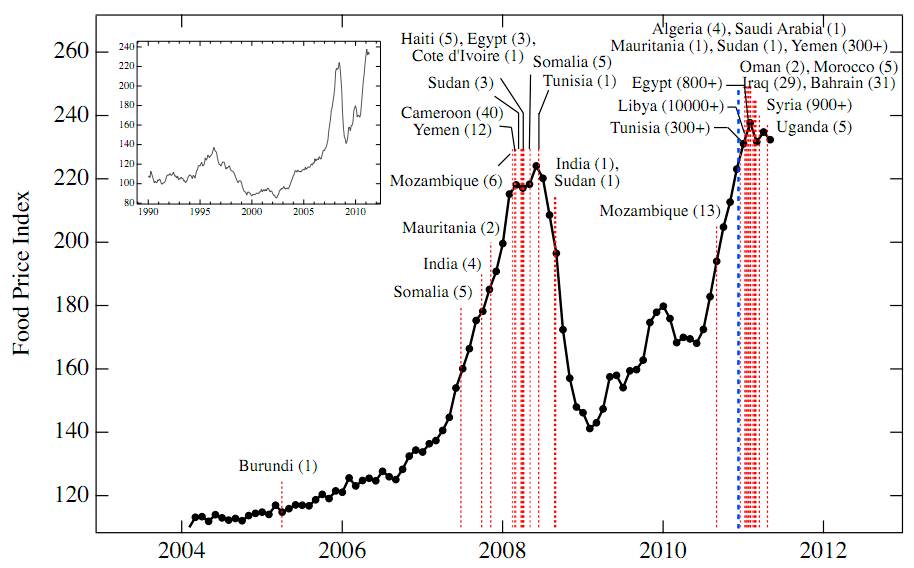Social unrest may reflect a variety of factors such as poverty, unemployment, and social injustice. Despite the many possible contributing factors, the timing of violent protests in North Africa and the Middle East in 2011 as well as earlier riots in 2008 coincides with large peaks in global food prices. We identify a specific food price threshold above which protests become likely. These observations suggest that protests may reflect not only long-standing political failings of governments, but also the sudden desperate straits of vulnerable populations. If food prices remain high, there is likely to be persistent and increasing global social disruption. Underlying the food price peaks we also find an ongoing trend of increasing prices. We extrapolate these trends and identify a crossing point to the domain of high impacts, even without price peaks, in 2012-2013. This implies that avoiding global food crises and associated social unrest requires rapid and concerted action.
Excerpt:

Red dashed vertical lines correspond to beginning dates of food riots" and protests associated with the major recent unrest in North Africa and the Middle East. The overall death toll is reported in parentheses [26{55]. Blue vertical line indicates the date, December 13, 2010, on which we submitted a report to the U.S. government, warning of the link between food prices, social unrest and political instability [56]. Inset shows FAO Food Price Index from 1990 to 2011